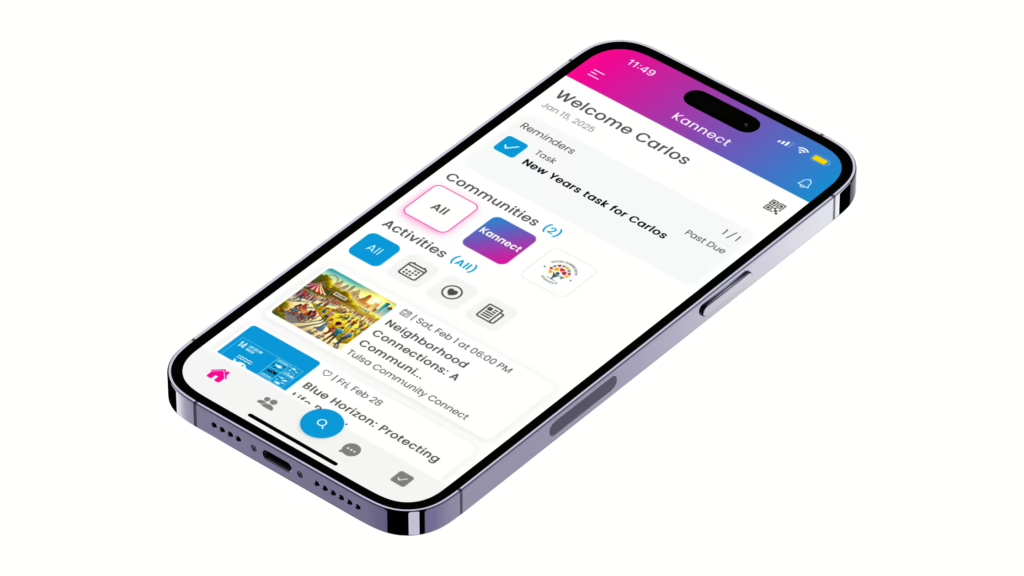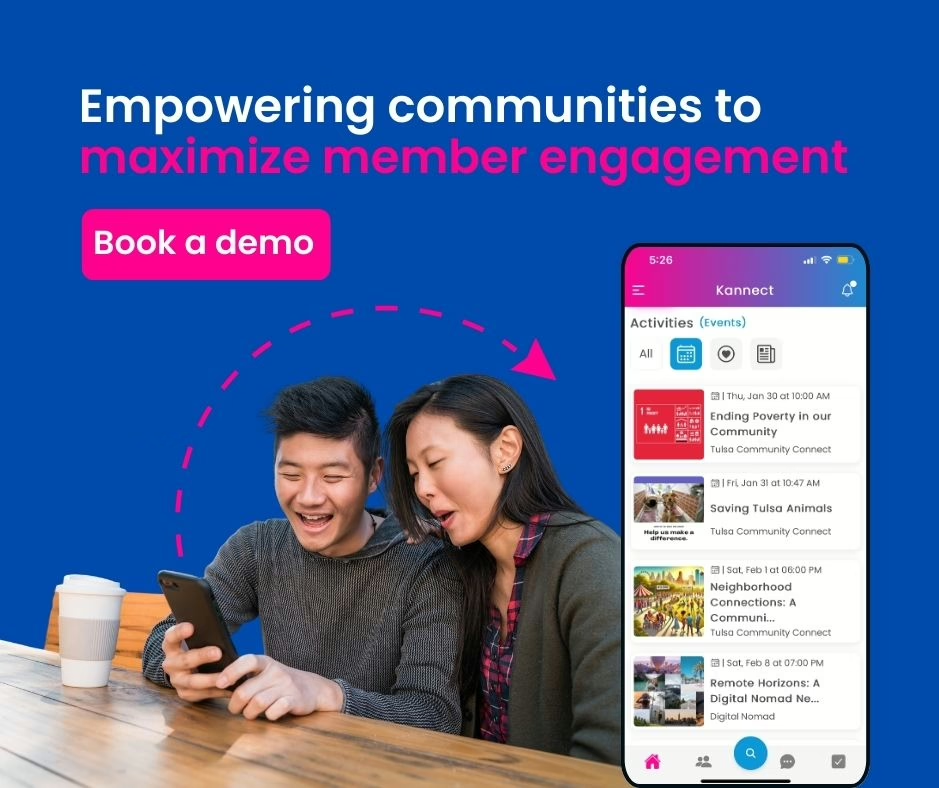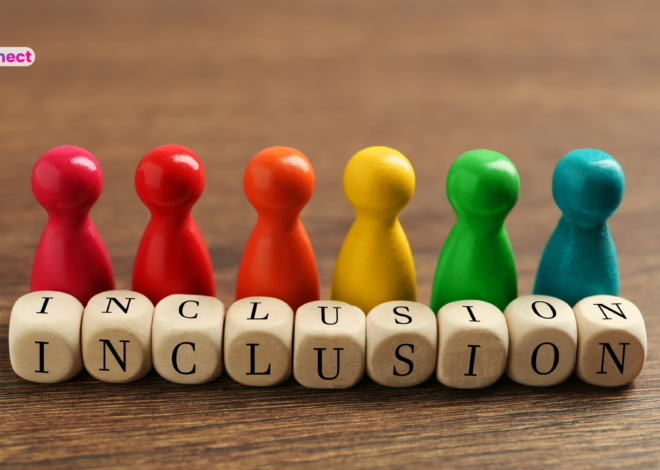
Top 5 Mistakes Organizations Make in Member Onboarding (And Effective Ways Fix Them)
Table of Contents
Understanding the Importance of Member Onboarding
Member onboarding is more than just a welcome email; it’s the foundation of a lasting relationship between your organization and its members. It’s the first impression, the moment when new members decide whether they will fully engage with your community or just passively exist within it. Onboarding sets the tone for the entire membership experience, providing clarity, direction, and excitement about what lies ahead. Yet, many organizations stumble during this crucial phase, leading to disengagement and attrition. A poorly executed onboarding experience often results in high drop-off rates, leaving organizations struggling to maintain meaningful connections with new members.
The first few days or weeks of a member’s experience are pivotal. This is when they form their perception of your community and decide if it’s the right fit for their needs and expectations. A well-thought-out onboarding process creates a sense of belonging and ensures that members know exactly how to engage with the platform or community. It’s about making them feel not only welcomed but also excited to participate. Without this solid foundation, even the best community resources and offerings can go unnoticed or unused.
When done correctly, member onboarding not only ensures that your members are set up for success, but it also promotes long-term loyalty, involvement, and retention. By providing the right tools, resources, and support from the start, you position your community for sustainable growth and positive engagement. This initial phase is your opportunity to make a lasting impression that sticks and resonates, creating advocates for your community rather than passive members.
Let’s delve into the top five mistakes made during member onboarding and explore actionable solutions to enhance your community experience and growth.
1. Lack of a Structured Onboarding Process
The Mistake:
Approaching member onboarding without a clear, structured process can lead to inconsistent experiences, leaving new members feeling lost or undervalued.
When there’s no clarity or rhythm in the initial steps, members often disengage before they even have a chance to explore the community.
It’s not just about saying “Welcome”, it’s about showing members where to go, what to do, and how they fit in. Disorganization in onboarding often creates a perception of carelessness or inattention, which can quickly erode trust.
The Fix:
Develop a standardized onboarding framework that includes:
- A clear timeline of onboarding activities
- Personalized welcome messages
- Introduction to key community features and guidelines
- Opportunities for early engagement
This could look like a simple checklist that gets triggered the moment a member joins, offering them step-by-step directions and interactions. You might schedule milestone touchpoints like a Day 1 introduction, Day 3 community tip, and a Day 7 check-in to pace their journey and keep them engaged.
Visual onboarding journeys, short how-to videos, and even quick polls or icebreaker activities can make a huge difference. It’s important that members don’t just see what’s available, they should feel invited into it.
💡 Pro Tip with Kannect:
Utilize Kannect’s automated workflows to create consistent and personalized onboarding experiences, ensuring every member feels welcomed and informed. With Kannect, you can design intuitive, pre-set onboarding journeys that automatically adapt to different member types or community goals. It’s clean and simple interface makes it easy for new members to navigate, engage, and find their rhythm within the community right from day one.
2. Overloading New Members with Information
The Mistake:
Bombarding new members with excessive information can be overwhelming, causing them to disengage early on. When new members are flooded with an overwhelming amount of details all at once, it can create a sense of confusion, leaving them unsure of what to prioritize or where to start.
Instead of feeling guided, they might feel lost in a sea of information, resulting in frustration rather than engagement. It’s important to remember that an overwhelming onboarding experience doesn’t just make members feel burdened, it makes them less likely to return.
This makes poor member onboarding a major cause of early member dropout.
The Fix:
Adopt a phased approach to information sharing:
- Prioritize essential information in the initial stages
- Use engaging formats like short videos or interactive guides
- Provide easy access to additional resources as needed
Take it step by step. Introduce the key aspects of the community at a pace that encourages exploration without overwhelming the new member. Break complex topics down into small, digestible pieces that members can absorb over time. This could be a weekly digest or even micro-learning content that offers them just enough to stay engaged but not too much at once.
Effective member onboarding should feel like a curated path, not a maze.
Pacing your member onboarding process helps build clarity and prevents early burnout.
💡 Pro Tip with Kannect:
Leverage Kannect’s content management features to deliver information in digestible chunks, enhancing member retention and engagement.
With Kannect’s automated onboarding workflows, you can ensure that content is strategically delivered over a set period of time, preventing overload while also keeping the member’s interest piqued.
This ensures your member onboarding is dynamic and responsive, not one-size-fits-all.
3. Neglecting Personalization
The Mistake:
Treating all members the same ignores their unique interests, goals, and reasons for joining your community.
Personalization is a key element that drives engagement. When members feel like they are treated as individuals, rather than just a part of a larger group, they are more likely to connect and engage.
Generic content and communication make members feel disconnected, as if they aren’t truly seen or heard. It can diminish the sense of belonging within the community. This lack of customization in member onboarding results in members losing interest quickly.
The Fix:
Implement personalization strategies such as:
- Segmenting members based on interests or demographics
- Tailoring content and communication to individual preferences
- Assigning community mentors or buddies
Personalization goes beyond simply addressing members by name; it’s about speaking to their unique interests, values, and goals within the community.
Start by understanding what drives each member to join. Is it networking, learning, or contributing? Tailor their experience to reflect these motivations.
Creating personalized content and providing options that speak to members’ goals allows them to feel seen and connected from the start.
A personalized member onboarding experience increases emotional investment and reduces dropout rates.
When member onboarding reflects a user’s identity, it becomes a memorable and effective journey.
💡 Pro Tip with Kannect:
Use Kannect’s member segmentation tools to deliver personalized experiences, fostering a sense of belonging and encouraging active participation.
Kannect allows you to assign personalized tasks, offer community recommendations based on member interests, and automate messages that cater to specific needs and preferences.

4. Failing to Set Clear Expectations
The Mistake:
Without clear guidelines, new members may be uncertain about how to engage, leading to inactivity or inappropriate behavior. When community expectations are left unclear, members may struggle to understand how to interact with others, leading to confusion or negative experiences.
A lack of direction also means members may not realize the value of active participation, or how their involvement contributes to the community’s growth. This weakens the entire purpose of member onboarding, which should help members feel confident and connected.
The Fix:
Establish and communicate clear expectations:
- Outline community rules and etiquette
- Provide examples of constructive participation
- Encourage questions and provide support channels
Setting expectations upfront can prevent misunderstandings and help members know exactly what is expected of them and what they can expect in return.
Clearly communicate the tone and values of the community, and explain how members can contribute meaningfully.
By showing members the right way to engage – through examples, guides, and FAQs, you encourage them to become active, positive participants. Clarity is a key pillar in member onboarding, it removes uncertainty and builds trust. Member onboarding should always aim to make expectations clear without being overwhelming.
5. Ignoring Feedback from New Members
The Mistake:
Overlooking feedback from new members misses opportunities to improve the member onboarding process and address issues early. If you don’t seek input from new members about their onboarding experience, you’re missing out on valuable insights that could enhance future onboarding efforts.
Ignoring this feedback also signals that their opinions are not valued, which could lead to decreased loyalty or interest in staying within the community.
Without feedback, your member onboarding process stagnates and fails to evolve.
The Fix:
Create channels for new members to share their experiences:
- Conduct short surveys after the onboarding period
- Hold feedback sessions or open forums
- Act on feedback to make continuous improvements
Giving new members the chance to share their thoughts not only helps improve your onboarding process, it fosters a sense of ownership and inclusion. Encourage constructive feedback by asking specific questions and giving members an easy way to voice concerns or suggestions.
By acting on the feedback received, you show that the community is dynamic and evolving based on member needs. Continuous improvement is at the heart of successful member onboarding. Feedback helps identify friction points and improve each step of the member onboarding experience.
Enhancing Member Onboarding with Kannect
Kannect offers a suite of tools designed to streamline and personalize the member onboarding process:
- Automated welcome sequences
- Personalized content recommendations
- Engagement tracking and analytics
- Feedback collection mechanisms
By leveraging Kannect, organizations can create a more effective and engaging onboarding experience that fosters community growth. Kannect’s ability to automate key aspects of onboarding ensures no detail is overlooked, and members are consistently presented with the right content at the right time.
When your member onboarding experience is powered by data, automation, and personalization, you’re setting members up for long-term success.

Final Thoughts
The Start Shapes the Story
Every thriving community begins with a moment – a decision to join, to show up, to be part of something. But what happens next is what determines whether that moment becomes a lasting connection or a fleeting visit.
That’s where member onboarding truly matters.
It’s not just about passing on information; it’s about opening a door. And when that door leads to clarity, warmth, and purpose, new members feel seen, not just signed up.
An intentional member onboarding process becomes the bridge between curiosity and commitment.
When someone joins your space, they’re asking: “Do I belong here?” and the way you welcome them answers that question, sometimes more powerfully than you think.
Avoid the Rush, Build with Care
Rushing through onboarding is like skipping introductions at a dinner party, it makes everything else feel off. The experience doesn’t have to be complex, but it should be thoughtful. Clear expectations, personalized messages, early touchpoints – these small elements show that you’re paying attention.
Take time to walk new members through what matters, how they can participate, and what support they can lean on. Member onboarding is your opportunity to say: “We’re excited you’re here and we’ve created something meaningful for you to be a part of.”
That message resonates far beyond a welcome email. It shapes engagement, trust, and growth over time.
Keep It Alive
Great onboarding doesn’t end after Day 1, it evolves. The most successful communities treat onboarding as a continuous invitation, a cycle of learning and reconnecting. As your space grows and shifts, revisit your process. Ask what’s working, what’s missing, and where you can show up better.
Member onboarding isn’t a set-it-and-forget-it task. It’s a reflection of your values, your people, and your culture. When you treat it with care, your members will feel it. And when they feel it, they stay, engage, and invite others in.
From Insights to Action: Delivered Weekly
💡 Ready to improve your community experience? Follow us on LinkedIn for the latest trends and tips on community growth.
📩 Join our newsletter – Community Engagement Playbook to get proven strategies delivered to your inbox every week.
Try Kannect today

Proudly powered by WordPress
What is Member Onboarding?
Member onboarding refers to the process of welcoming and guiding new members into a platform or community. It helps them understand the space, how to engage, and where to start. It is all about making members feel comfortable, informed, and connected as it’s the bridge between signing up and truly becoming part of the community. Effective member onboarding ensures people don’t just join – they stay, participate, and feel a sense of belonging.
Why is good member onboarding critical for community success?
A well-planned member onboarding process sets the foundation for everything that follows. When new members join a community – whether it’s a professional network, a creator space, or an internal team, they’re seeking clarity, comfort, and connection. Good member onboarding ensures that they don’t just join, but stay, engage, and contribute.
It helps reduce drop-offs, improves participation, and ensures people understand the culture and rhythm of the space from day one. Without it, even the most promising communities risk becoming inactive or fragmented.
How can poor member onboarding affect long-term engagement?
When onboarding is rushed, unclear, or inconsistent, new members often feel lost or disconnected. Over time, this leads to passive involvement or worse, silent exits.
The first few interactions in a community set the tone for future engagement, and that’s why investing in thoughtful, intentional member onboarding isn’t just beneficial, it’s necessary. It’s the difference between a visitor and a participant.
What role does Kannect play in improving member onboarding?
Kannect is designed to simplify and strengthen the member onboarding journey. From customizable welcome paths to easy-to-navigate dashboards, it ensures each new member receives a curated experience that feels personal and purposeful.
With features like Daily Summary, community activities and events, engagement tracking, and space for feedback, Kannect doesn’t just welcome new members, it involves them. It transforms member onboarding from a one-time task to an ongoing conversation.
What are some common mistakes organizations make with member onboarding, and how does Kannect help fix them?
Organizations often overload new members with too much information, skip personalization, or fail to follow up after the first week.
Kannect addresses these gaps by offering a structured yet flexible member onboarding experience. You can space out your content, set automated reminders, personalize messages, customize notifications and track engagement – all in one place. This helps organizations stay consistent, responsive, and aligned with what their community actually needs.
Is there a way to measure the success of your member onboarding efforts?
Absolutely! Success in member onboarding isn’t just about numbers, it’s about momentum. Metrics like retention rate after 30 days, engagement levels in the first month, feedback received during onboarding, and participation in introductory events all serve as indicators.
Platforms like Kannect provide dashboards and insights that help you monitor these metrics, understand drop-off points, and continuously refine your onboarding process. Because great onboarding isn’t a one-time setup, it evolves with your community.
How often should you revisit or refresh your member onboarding flow?
Ideally, your member onboarding journey should be reviewed quarterly or after any major changes in your community structure or goals.
Member needs evolve. What worked last year may feel outdated or irrelevant today. With tools like Kannect, updating onboarding flows is quick and seamless, so you’re never stuck with a static experience. Think of onboarding as your community’s first handshake, make sure it stays firm, friendly, and fresh.



